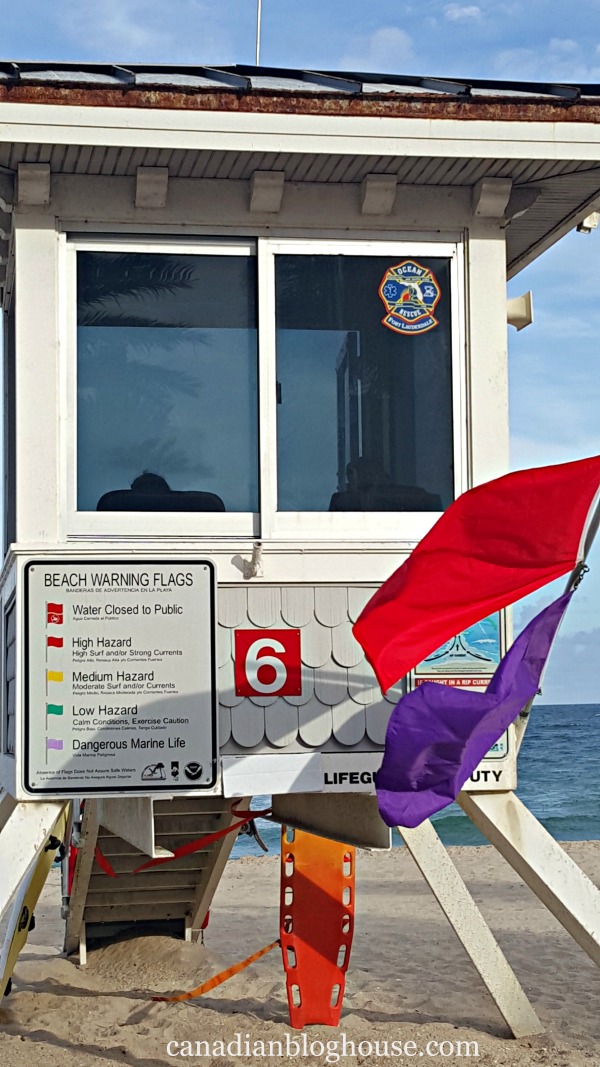
Canadian Blog House has partnered with Thrifty Mom Media as a member of the Red Cross Canada water and pool safety blog team and received compensation for the post. All opinions are our own.
A Lesson In Swimming Lessons
I still remember my very first swimming lesson. Forty-five years later, this memory is just as strong today, as it was the day it happened.
My fear of drowning during that first swimming lesson, while completely nonsensical, felt very real, and very warranted at the time.
As I stood in water up to my waist, the instructor asked me to plug my nose, close my eyes, and put my face under water.
The thought of doing this terrified me.
I tried to follow these instructions – over and over. The fear was too real. I just couldn’t put my face under the water.
Until my instructor pushed my face under water for me.
I’m sure she thought she was doing me a favour. Perhaps she was getting frustrated with me and just wanted to get the swimming lesson over with.
I don’t think she anticipated my reaction. I let out a blood-curdling scream that could be heard across the entire lake.
My mother certainly heard me, and came running. By the time she reached me, I was inconsolable.
So much for the swimming lesson that day.
Looking back, this bad memory really isn’t all that bad. It’s more silly, and embarrassing, than anything.
My mother always told me that she thought something horrible was happening to me thanks to my horrific scream. She thought the same thing another time at the cottage, when I discovered a daddy-long-legs crawling on my pyjamas. Apparently I was a little dramatic when I was scared!
Despite my terrifying (to me) first go with this swimming lesson, my parents pushed me to continue with my swimming lessons at the cottage.
And thank goodness they did.
I spent three summers having the best time of my life in that lake. I went from being terrified of water, to swimming like a fish. Later summers were spent swimming daily in the family pool.
If you ask me now to list my fondest childhood memories, our summers at the family cottage, and in the family pool, would top that list.
Unfortunately, not everyone’s childhood experiences with lakes and pools are happy ones.

According to the Red Cross, hundreds of Canadians drown in pools and natural bodies of water like lakes and oceans every year.
Our children are most susceptible to drowning.
[bctt tweet=”Drowning doesn’t look like what you think it looks like ~ Canadian Red Cross ” username=”CanBlogHouse”]
A couple of shocking statistics from the Red Cross:
- 1 in 5 fatalities, from falls into water, are children under the age of 5.
- between 2009-2014, an average of 35 children, ages 1-14, died by drowning each year while playing in or around water.
- 77% of of children 1-4 who fell into water were alone (without adult supervision or momentary absence of adult)
When kids are around water, it only takes seconds for a tragedy to occur…
As adults, it’s our responsibility to help our kids learn what to do during water emergencies. We need to help them to understand their own personal limits, help them understand how dangerous open water can be, and show them how quickly things can turn dangerous in, or around, water.
But kids cannot do this alone. It’s up to us to ensure our kids’ safety around water.
That’s where the Canadian Red Cross can help.
[bctt tweet=”Active supervision, 4-sided fenced pools and first aid training save lives ~ Canadian Red Cross” username=”CanBlogHouse”]
According to the Red Cross, so many drowning deaths could have been prevented through active supervision by a responsible adult.
So what exactly does “active supervision” mean?
- Caregivers need to actively supervise children – it’s not enough to be nearby, eyes need to be on kids all the time. Reading a book, texting or surfing the internet by the pool is not active supervision. Consider requiring young children and non or weak swimmers to wear a life jacket to help them stay at the surface.
- Caregivers who need to step away from their responsibilities as the supervisor near water should take children with them
- Backyard pools should be properly fenced and have self-closing and self-latching gates. Pool decks should be cleared of toys and debris to prevent trips and falls. Kiddie pools should be drained when not being supervised.
- If you are responsible for kids around water, you should know how to perform a safe rescue

Over the years, having spent plenty of time around water, I’ve been involved in 3 incidents at lakes where it became evident, all too quickly, how important it is to know how to swim, and to have a good understanding of water safety.
Everybody Overboard
One windy summer’s day, my brother-in-law decided it was the perfect day to go windsurfing. He’s a strong swimmer, an expert windsurfer, and a very fit person. Despite all this, once out on the open water on such a windy day, he found himself unable to return to shore on his windsurfer.
So three of us took off in a boat to “rescue” my brother-in-law. Windy conditions and high waves made our task very difficult.
In our haste to get him into the boat, we made a huge mistake that could have spelled disaster for all of us. We all positioned ourselves on the same side of the boat, leaning over the side, trying to grab on to my brother-in-law and his windsurfer.
With the boat listing heavily in the wavy conditions, all three of us nearly ended up in the water with my brother-in-law. It was a close call…and a good lesson.
Tubing Can Be Trouble
Tubing on a lake can be a whole lot of fun. It can also be a very dangerous activity. While many things can go wrong when tubing in open water, tubing fun can also turn to tubing terror – close to shore.
A tubing ride, one summer’s day, with my small nephew on my lap, was a thrill for both of us – until the boat towed us into shore towards the dock.
A sudden drag on the tow line from the boat caused our tube to be sucked underwater – and the two of us right along with it. The tube quickly resurfaced, however, it flipped over on top of us. It all happened so quickly, yet it seemed like a minute-long struggle to get a hold of my nephew underwater, and get us both up to the surface.
Something so fun had suddenly turned so terrifying.
Tippy Canoe And Bella Too
I will never forget the day we tipped our canoe. We had just filled the canoe with all our gear, and the dog. Being careful as we stepped into the canoe, the problem occurred when my partner shifted on his seat. The canoe suddenly tipped over, spilling all our gear, the dog, and the two of us, into the water.
We were lucky. We were near the shore. No real harm done, except a whole lot of wet gear, and a few bruises.
But imagine if that had happened in the middle of the lake on our way to our destination. What if we had X-Man with us too? This seemingly harmless mishap could have been tragic.

My stories are not unique. I bet you have your own stories involving water safety, and near tragedy.
I could share further stories about family members and friends who have had close calls.
Like the 3 times my uncle saved my mum from drowning.
Like an acquaintance of mine who was left paralyzed from the neck down after diving into shallow water, and nearly drowning.
Please ensure your kids are water safety savvy.
Enrolling children in Red Cross swimming lessons can equip kids with the skills and knowledge they need to stay afloat.
And remember...it’s never too late to learn how to swim. Adults can enroll in Red Cross swimming lessons too!
For more information on Red Cross swimming lessons, and how to keep your kids safe this summer, please visit redcross.ca

